Native vs Indigenous?
There is a very important difference between native and indigenous plant species. So what is the difference? Well native means that the plant is native to anywhere in Australia. Indigenous means that the plant species comes from a certain area such as the Bass Coast Shire or the South Gippsland Shire.
Indigenous plants are exciting – They are ‘fit-for-purpose’ plants and we have species for your soggy/boggy, sandy and salty, trees or shrubs (small to tall) ground lovers, climbers and of course species who give sweet and spectacular seasonal ‘shows’ via their foliage or their flowers.
Indigenous plants are also more likely to tolerate the generous rainfall that the region enjoys most years and the hotter periods that sneak in during Summer. Planting indigenous is ‘giving back’, helping to enhance wildlife corridors and provide links between fragmented or isolated patches…we can all find a spot for an indigenous plant to grow!
Our local Shire councils are also encouraging the community to plant indigenous species. Guides are available for selecting plant species suitable for the different vegetation zones within our Shires. E.g: Indigenous Plants of Bass Coast Shire. The lists are based on the Ecological Vegetation Classes (EVC) appropriate for each area. EVCs are useful for identifying species adapted to your local area. However, they are a broad guide only as conditions may vary within a site. Further information on EVCs: environment.vic.gov.au
Take a look at our Plant Fact Sheets and these other resources to help you to select the most appropriate indigenous plant for your place. if you still need help please email our specialist for assistance contact@wsbn.org.au
Environmental Weeds
An environmental weed is a plant in the wrong place (threatens plant diversity & reduces habitat for animals & birds). Some environmental weeds are not obvious as they are so familiar & attractive. Here are some examples of plants that are commonly found throughout our shires but are a significant environmental weed. These plants are spread by birds moving the seed about, our water ways and people who grow them for their ornamental and screening purposes with limited understanding of their biodiversity damage.
Environmental weed information:
• Bass Coast shire Council – https://www.basscoast.vic.gov.au/…/environment/weeds-pests
• South Gippsland Shire Council – https://www.sgln.net.au/south…/weed-identification/
Sweet Pittosporum
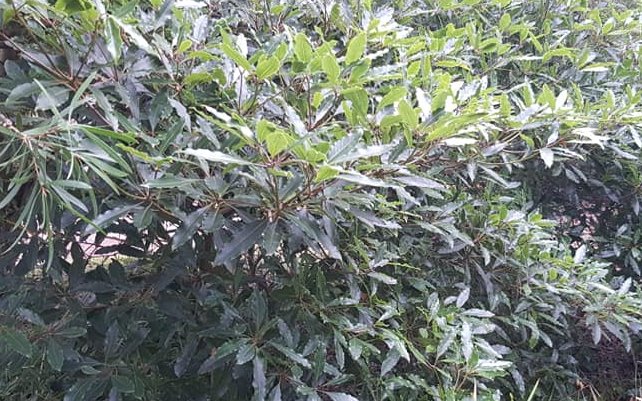
Sweet Pittosporum is a plant that historically has been planted for ornamental purposes, hedging and screening. Sweet Pittosporum can grow to 15m tall and forms a dense canopy with significant foliage that shades the ground and drops lots of leaves. A chemical inhibitor in the leaves starves surrounding plants. Seeds (when ripe the berries are bright orange) are spread by fruit eating birds and commonly through our water ways.
Unfortunately the species has also proven to be very invasive in bushland and this plant is classified as an environmental weed across our region.
Did you know?
- This plant is NOT permitted in your tip green waste to avoid re-infestation through mulching
- This plant CAN BE disposed of in the organics bin (green lid) that the council provides or at your local Transfer station
How can you become part of the solution?
Target fruit bearing plants first, cut as close to the ground as possible and immediately paint with poison. It will take some effort if it is well established.
Facebook: An informative comment was posted on our Facebook page from a share to the Victorian Indigenous Gardeners (Phillip) ” Best methodology for big ones is to frill and fill using diluted glyphosate (label says 1:12). If you’re removing the biomass from the site, by all means cut and paint the stump but just dropping the tree can damage any ground flora etc. that the tree falls onto. The allelopathic (toxic to other plants) nature of even the dead leaves are best kept inside the original drip line of the tree. Leaving the tree standing is better for habitat outcomes and site carbon retention. Unsightly dead pitto skeletons are the least of our worries. They fall down pretty quickly”.
Grow this instead…
Bursaria spinosa (common names Sweet bursaria or Christmas flower)
This tall shrub fittingly has a flower head that takes on the shape of a Christmas Tree. This species provides all of the positive features of the Sweet Pittosporum and more….most importantly this species is indigenous to our region!
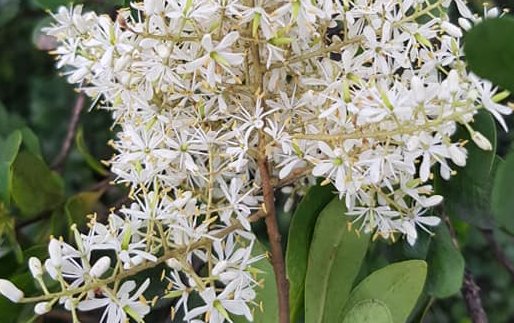
Agapanthus
A common species often planted in coastal communities, as they are a hardy plant used for borders & focal points.
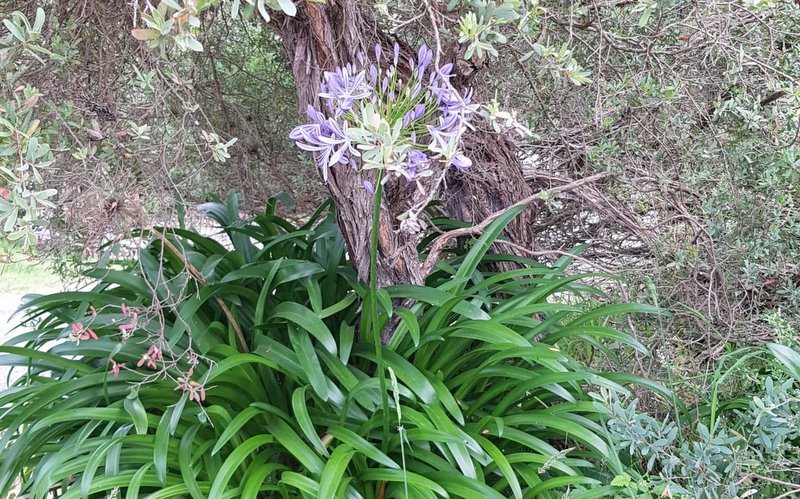
Historically, we have selected Agapanthus for our spaces, so why are they a problem?
Once established Agapanthus spread by seed that falls from the clump drifting to other spaces & via fleshy rhizome roots. Going rogue, they create large clumps with flower heads that contain dozens of seeds invading gardens, bushland & roadside areas displacing indigenous grasses, groundcovers & shrubbery.
- Did you know? This plant is NOT permitted in your tip green waste to avoid re-infestation through mulching
- This plant CAN BE disposed of in the organics bin (green lid) that the council provides or at your local Transfer station
How can you become part of the solution?
- Dig them out (hand pulling/sifting through soil) – weeding your Agapanthus spaces one garden area at a time. Look for the bulbs & gain control over the plant sites by monitoring any re growth & remove
- When dug out dispose the plants appropriately & avoid giving them away (nature strip buy-swap-sell offerings). If you really want to retain Agapanthus in your garden, you can also cut off the flower head after it has finished flowering. This prevents the seeds from forming and having an opportunity to disperse. Take care to dispose of the flower heads appropriately. This strategy will at least help to confine the plant to your garden
Help our environment by removing Agapanthus.
Grow these instead…
- Dianella revoluta (common name is Black-anther) and grows to 2-3m tall
- Dianella tasmanica (common name is Tasman Flax-lily) & grows to 0.5 – 2m tall
- Dianella brevicaulis (common name is Coastal Flax-lily) & grows to 20cm tall
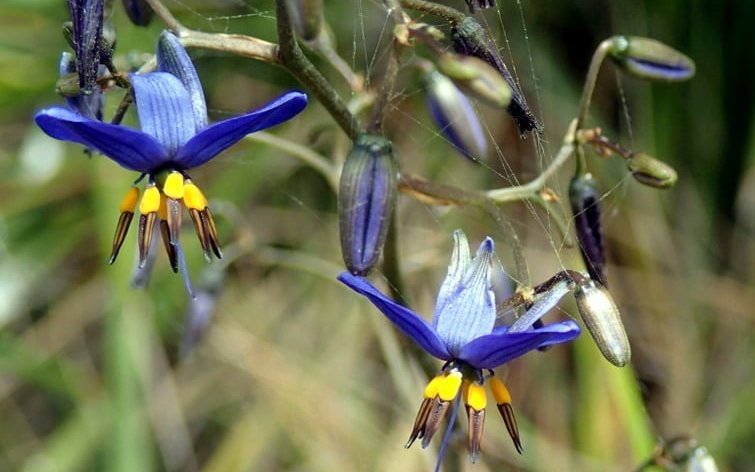
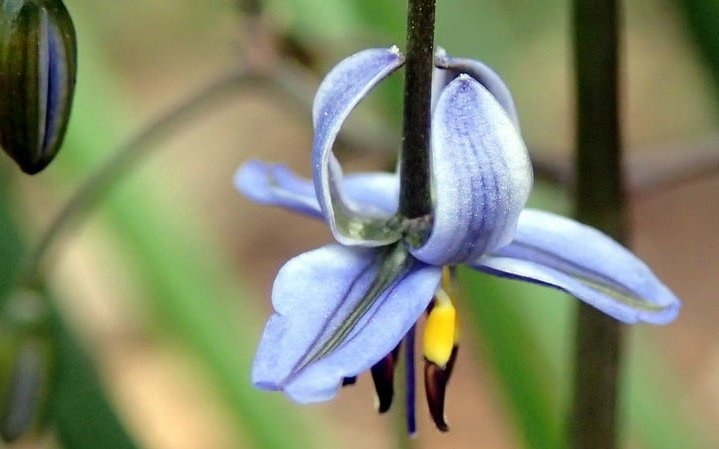
These stunning indigenous plants will grow superbly in our region and have characteristics that are familiar to the Agapanthus but with significantly more environmental benefits. They have strappy leaves like the Agapanthus with blue to violet flowers that bees & nectar birds enjoy. They bloom from October until December/January. They also grow well under established trees if you are looking for understorey are great border plants & help to support our birds who can eat the berries that form after flowering.
Plants for Hills
It is important to choose plants that will anchor the hillside and different species and types of plants will have different root structures that will help to halt erosion on steep slopes and stream sides. Revegetation for reducing soil loss through erosion control, revegetation for wildlife habitat and or stock shelter are strategies that will improve our regions biodiversity, water quality, reduce wind and contribute to green house gas absorption.
Landowners embarking on revegetation projects can seek guidance from local Landcare groups.
What is an Ecological Vegetation Class (EVC)?
- An EVC is a level of classification that identifies one or a number of floristic communities that appear to be associated with a recognizable environmental niche.
How do you determine a species list planting for the one or more identified EVC at your place?
- Landcare groups often have a list of species suitable for your region.
- Shire Councils publish a brochure for their respective regions
- You can also try the NatureKit tool to identify species that are indigenous to your property or region – See the example below
- WSBN experts are also happy to provide some advice, but we are unable to offer resources such as landscape ‘architecture’/climate project advice. If you need these services please seek expert advice from environmental consultants in their respective fields.
- Please click here to download a species list as an example for Hillside planting – South Gippsland (eg: Strezlecki Ranges, Bena, Kongwak & Jumbunna)
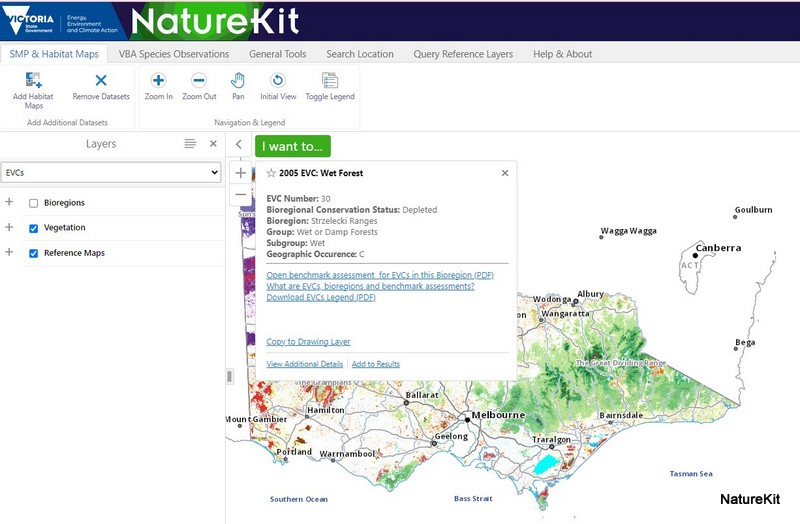
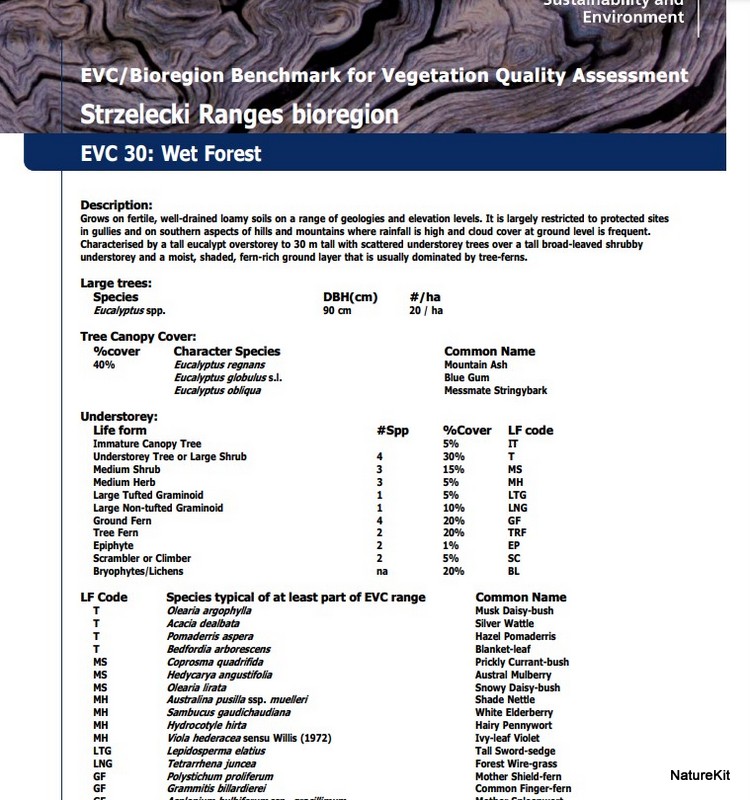
Plants for bees
Information & useful links about how to use indigenous plants to attract bees into your garden.
Bog plants
Content under development
Wetland plants
Content under development
Plants for wildlife
Content under development
Fire retardant & resistant plants
Intended as a guide only, view our list of Fire Retardant & Resistant Plants.
